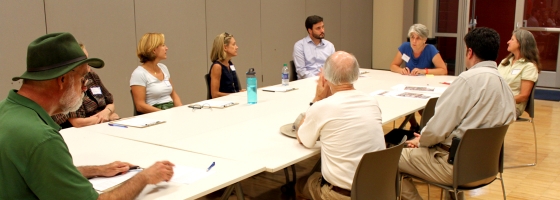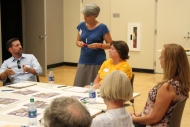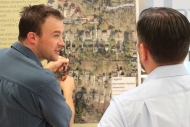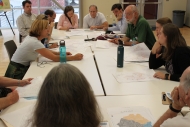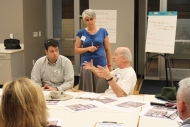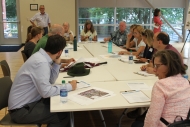Imagine being handed a list of 50 projects — some big, some small — and being tasked with prioritizing them. By what criteria would you do so? Easiest ones first? Preference for those benefitting the most people? By cost?
Such was the case Tuesday evening, July 30, as Decatur residents gathered for the final public input session of the city’s year-long Stormwater master planning process. Up for consideration was how, when facing the many recommended projects expected within the final plan, the city should determine which to tackle first.
Potentially guiding such a ranking might be:
Condition of the present infrastructure
Localized flood frequency
Localized flood depth
Impact on major thoroughfares
Impact to critical facilities
Flooding of private property
Who owns the infrastructure
Water quality impacts
Downstream and buffer impacts
Number of people impacted
Number of lots impacted
Impacts to trees
Associated benefits (recreation, green space, aesthetics, green infrastructure)
Equity
Future capacity needs
Longevity of the problem
And more
Participants contributed their own ideas, then discussed which represented the most logical criteria for prioritization. Those viewed as most important will ultimately inform the recommended ordering of the plan’s task list.
Some real life examples were presented on handouts, illustrating the challenging nature of addressing problem areas, particularly given their often complex web of public and private infrastructure operating as a system.
Modeling Expectations
Also on the evening’s agenda was discussion of the model being used to test storm performance and identify where capacity of our infrastructure may need to be expanded. The results show where simulated storm events exceed the available infrastructure capacity. Performance in each of Decatur’s watersheds was detailed on handouts, illustrating the nature and degree of each problem.
While not the only tool that will be used to identify potential stormwater projects, the model can help to pinpoint problems, identify causes, and guide the development of solutions.
Next Steps
The evening concluded with an opportunity for participants to leave detailed comments for the team. The comments, together with those received during the past 10 month input process, will serve as the foundation for the draft plan expected in the coming months.
Stay tuned for information on our next meeting presenting the draft. Until then, here’s some photos from the evening.
![]()
Enter your address and we’ll email you whenever we post.

